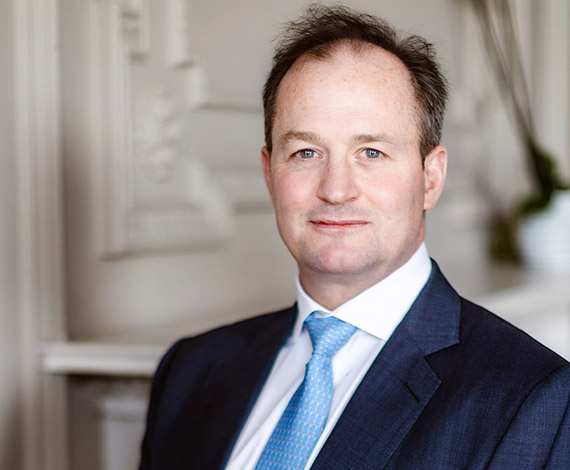Creating and Resourcing an Enforcement Plan to Persuade a Funder to Invest in Your Enforcement

 Public
Public
France has taken a significant step in codifying oversight of third-party financed collective actions with the issuance of Decree No. 2025-1191 on December 10, 2025.
An article in Legifrance outlines the new rules, which establish the procedure for approving entities and associations authorized to lead both domestic and cross-border collective actions—referred to in French as “actions de groupe.” The decree brings long-anticipated regulatory clarity following the April 2025 passage of the DDADUE 5 law, which modernized France’s collective redress framework in line with EU Directive 2020/1828.
The decree grants authority to the Director General of Competition, Consumer Affairs and Fraud Control (DGCCRF) to process applications for approval. Final approval is issued by ministerial order and is valid for five years, subject to renewal.
Approved organizations must meet specific governance and financial transparency criteria. A central provision of the new rules is a requirement for qualifying entities to publicly disclose any third-party funding arrangements on their websites. This includes naming the financiers and specifying the amounts received, with the goal of safeguarding the independence of collective actions and protecting the rights of represented parties.
Paul de Servigny, Head of litigation funding at French headquartered IVO Capital said: “As part of the transposition of the EU’s Representative Actions Directive, the French government announced a decree that sets out the disclosure requirements for the litigation funding industry, paving the way for greater access to justice for consumers in France by providing much welcomed clarity to litigation funders, claimants and law firms.
"This is good news for French consumers seeking justice and we look forward to working with government, the courts, claimants and their representatives and putting this decree into practice by supporting meritorious cases whilst ensuring that the interests of consumers are protected.”
By codifying these requirements, the French government aims to bolster public trust in group litigation and ensure funders do not exert improper influence on the course or outcome of legal actions.
The United Kingdom's Judicial Committee of the Privy Council is set to hear a closely watched appeal that could have wide-ranging implications for third-party litigation funding in international arbitration. The case stems from a dispute between OGD Services Holdings, part of the Essar Group, and Norscot Rig Management over the enforcement of a Mauritius-based arbitral award. The Supreme Court of Mauritius had previously upheld the award in favor of Norscot, prompting OGD to seek review from the Privy Council.
An article in Bar & Bench reports that the appeal is scheduled for next year and will feature two prominent Indian senior advocates: Harish Salve KC, representing Norscot, and Nakul Dewan KC, representing OGD. At issue is whether the use of third-party funding in the underlying arbitration renders the enforcement of the award improper under Mauritius law, where third-party litigation funding remains a legally sensitive area.
The case is drawing significant attention because of its potential to shape the international enforceability of funding agreements, particularly in light of the UK Supreme Court's 2023 PACCAR decision. That ruling dramatically altered the legal landscape by classifying many litigation funding agreements as damages-based agreements, thereby subjecting them to stricter statutory controls. The PACCAR decision has already triggered calls for legislative reform in the UK to preserve the viability of litigation funding, especially in the class action and arbitration contexts.
The Privy Council appeal will test the legal boundaries of funder involvement in arbitration and may help clarify whether such arrangements compromise enforceability when judgments cross borders. The outcome could influence how funders structure deals in jurisdictions with differing attitudes toward third-party involvement in legal claims.
Several major global banks, including JPMorgan, UBS, Citigroup, Barclays, MUFG, and NatWest, have successfully blocked a £2.7 billion ($3.6 billion) opt-out collective action in the UK’s Supreme Court. The proposed lawsuit, led by Phillip Evans, aimed to represent thousands of investors, pension funds, and institutions impacted by alleged foreign exchange (forex) market manipulation.
An article in Yahoo Finance reports that the case stemmed from earlier European Commission findings that fined multiple banks over €1 billion for operating cartels in forex trading. Evans’ action, filed under the UK’s collective proceedings regime, sought to recover damages on behalf of a wide investor class. However, the Supreme Court upheld a lower tribunal’s decision that the claim could not proceed on an opt-out basis, requiring instead that individual claimants opt in.
The judgment emphasized the insufficient participation rate among potential class members and found that an opt-out mechanism was not appropriate given the specifics of the case. Justice Vivien Rose, delivering the court’s opinion, noted that while individual claims might have merit, the representative structure lacked the cohesion and commitment necessary to justify a mass claim. As a result, the banks have succeeded in halting what would have been one of the largest collective actions in the UK to date.